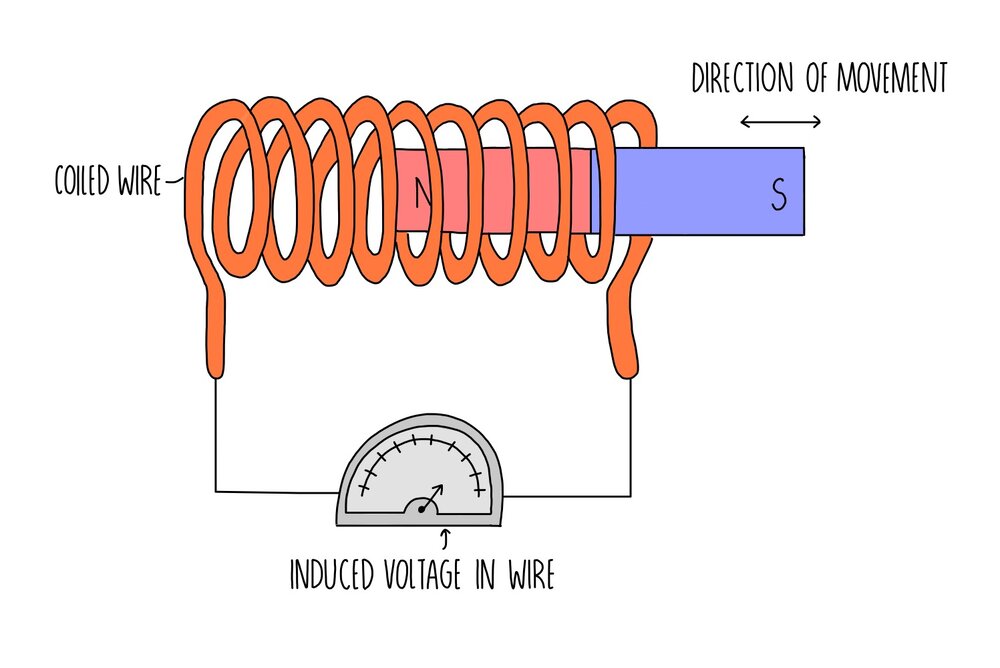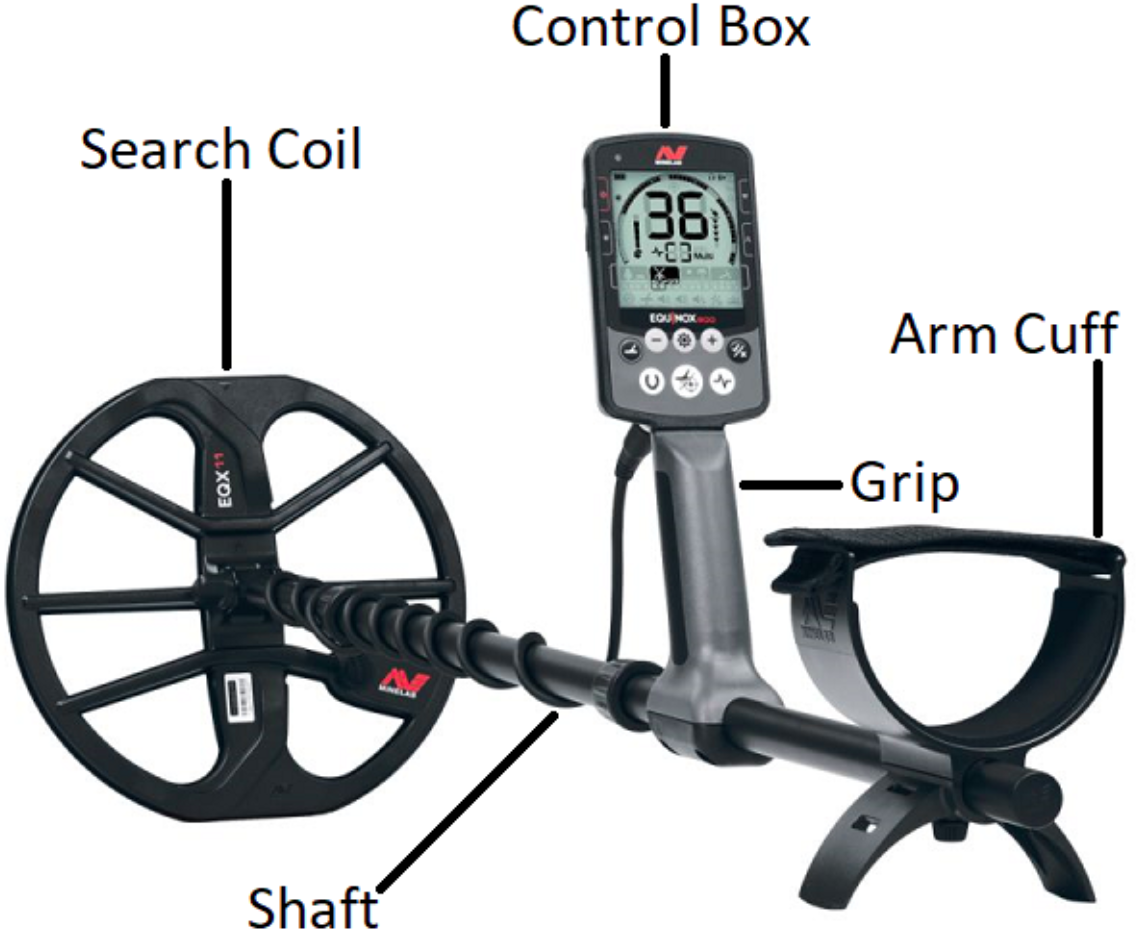Have you ever wandered through a field with your best metal detector in hand, listening intently for that telltale beep that signals you’ve hit the jackpot? Or perhaps you’re a seasoned treasure hunter, always on the lookout for that elusive piece of history. Either way, you may have wondered at some point: “how do metal detectors work?” Read on as we explain everything below.
First, What Are Metal Detectors?

Image Credits: nytimes.com
As the name suggests, metal detectors are devices that detect the presence of metal or metal objects in the ground. There are different kinds, including hand-held metal detectors and waterproof metal detectors.
But have you ever wondered what exactly makes metal detectors work? It all boils down to the science of electromagnetism, where metal detectors work through the principles of electromagnetic induction.
What Is Electromagnetic Induction?

Image Credits: thesciencehive.co.uk
Electromagnetic induction is a principle described by the Scottish physicist James Clerk Maxwell in the 19th century through a set of equations. It refers to the generation of an electric current in a conductor due to a change in the magnetic field.
Think of it this way; imagine you have a wire, and you move a magnet near it. This movement of the magnet changes the magnetic field around the wire, which, in turn, creates an electrical current in the wire which flows in the wire as the magnetic field changes. This is electromagnetic induction in action.
Maxwell’s equations showed how electromagnetic induction works and how we can use it in practical applications, such as metal detectors.
The Parts of a Modern Metal Detector

Image Credits: secondstarhobbies.com
You’ve always been fascinated by the idea of discovering hidden treasures, and you’ve finally decided to invest in a metal detector. Good choice!
Here is what each of its features does:
I. The Search Coil
Your metal detector’s search coil is the circular loop of wire that generates a magnetic field and detects metal objects. You hold the metal detector so that the search coil is close to the ground and start sweeping it back and forth to find your treasure.
II. The Transmitter Circuit
It is the part of the metal detector that generates the electrical current that flows through the search coil, creating the magnetic field. The magnetic field then induces an electrical current in metal objects in the ground, creating a secondary magnetic field.
III. The Receiver Circuit
The receiver circuit picks up the signals generated by the secondary magnetic field of the metal object. It processes them to determine if they indicate the presence of metal.
IV. The Control Box
It houses the transmitter and receiver circuits, the batteries, and other components that power your metal detector. The control box is also where you’ll find the controls for adjusting the sensitivity and discrimination of your metal detector.
V. The Shaft
The metal detector shaft connects the search coil to the control box and allows you to control the height of the search coil above the ground.
VI. The Stem
The stem connects the control box to the shaft, allowing you to hold the metal detector and maneuver it over the ground.
VII. Display
The tool’s display provides you with information about the signals detected by the receiver circuit, such as the strength and proximity of the metal object. Some metal detectors have a simple display that indicates the presence of metal, while others have more advanced displays that show the type and depth of the metal object.
A Step By Step Explanation of How Metal Detecting Happens

Image Credits: theguardian.com
Now that you understand the process of electromagnetic induction and the components of a metal detector that makes it effective in metal detection, here’s a step-by-step explanation of how the tool works:
Step 1: Electromagnetic Field Generation:
While you point the search coil to the ground, the metal detector’s transmitter coil generates an electromagnetic field by allowing an electrical current to flow through the coil.
Step 2: Interaction with Metal Objects:
When the electromagnetic field comes into contact with metal objects in the ground, it induces an electrical current in the metal, creating a secondary magnetic field.
Step 3: Detection of the Secondary Magnetic Field:
The metal detector’s receiver coil detects the secondary magnetic field created by the metal object.
Step 4: Signal Processing:
The signal to the receiver coil is processed by the metal detector’s circuitry and converted into an audio signal or visual display on the control box.
Step 5: Audio Signal Interpretation:
The audio signal provides information on the presence and type of metal, with different tones indicating different kinds of metal.
Step 6: Depth Indication:
The visual display or audio signal may also indicate the depth of the metal object.
Step 7: Discrimination:
The metal detector’s discrimination function allows you to filter out unwanted metals, such as iron or aluminum, and focus on more valuable ones, such as gold or silver.
Types of Metal Detectors You Can Get for Treasure Hunting

Image Credits: resalvaged.com
There are several different types of metal detectors available, each with metal detection technology. The most common include:
a) Beat Frequency Oscillation (BFO) Metal Detectors
BFO metal detectors use a simple yet effective detection method based on electromagnetic induction.
Two radio frequencies are generated and slightly offset, creating a beat frequency. When there is metal in the ground, the beat frequency changes, and the metal detector sends you an audio signal.
b) Very Low Frequency (VLF) Metal Detectors
A VLF metal detector uses a low-frequency electromagnetic field to detect metal objects.
VLF detectors are versatile and can be used in various environments, including land and freshwater. They are typically more affordable and easier to use than pulse induction (PI) detectors.
c) Pulse Induction (PI) Metal Detectors
A pulse induction metal detector uses a high-energy electrical pulse to generate an electromagnetic field.
The pulse induction detector is ideal for detecting deep, large metal objects and is often used in saltwater environments or highly mineralized soil.
d) Induction Balance Metal Detectors
Induction balance metal detectors use two coils, one acting as a transmitter and the other as a receiver.
When metal is present in the ground, it changes the balance between the transmitter and receiver coils, and the metal detector rings an audio signal.
e) Multi-Frequency (MF) Metal Detectors
Multi-frequency metal detectors use multiple frequencies to detect metal objects, providing increased sensitivity and versatility. You can use MF detectors in various environments, and they are suitable for locating a wide range of metal objects, including very large relics.
Conclusion
So, there you have it! We hope this article has explained the workings of metal detectors and helped you understand how these fascinating devices operate. From the principles of electromagnetic induction to the components that make up modern metal detectors, we have provided a comprehensive guide to help you navigate the world of treasure hunting.
So, grab your metal detector and set out on an adventure to discover hidden treasures and uncover lost history. Who knows what wonders await you!











